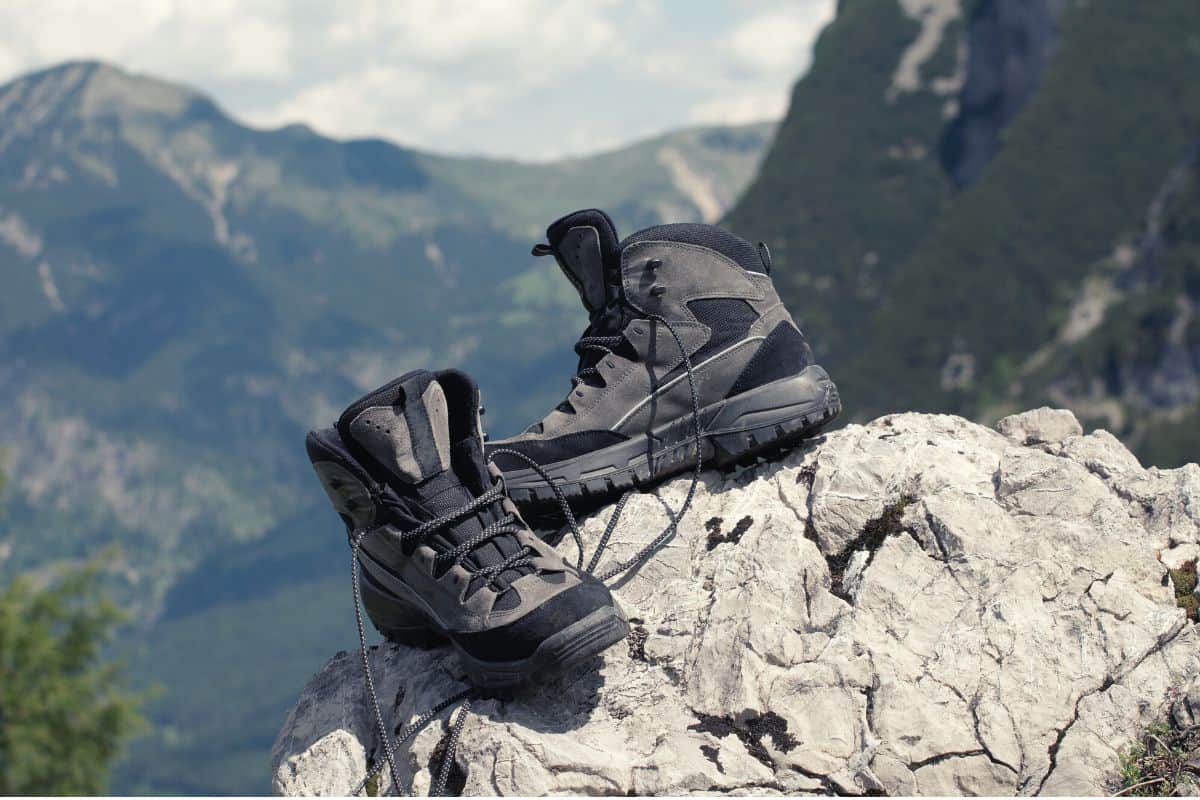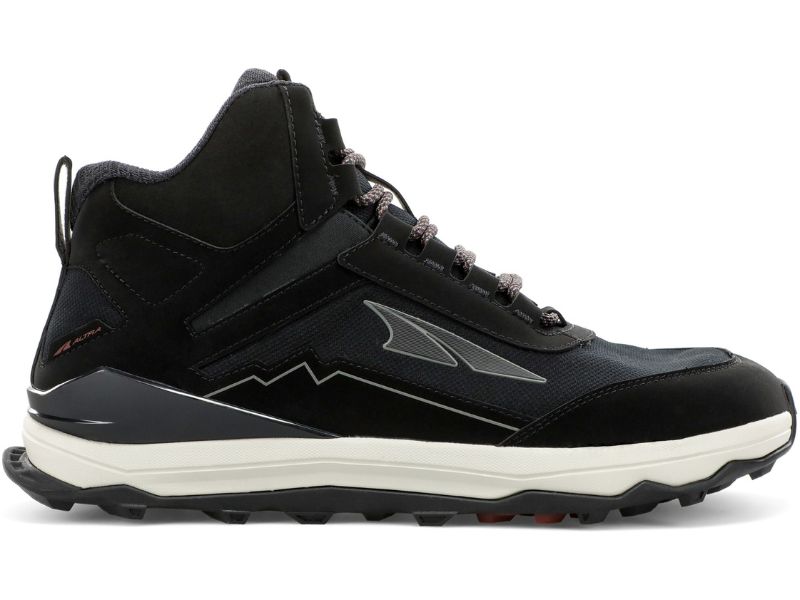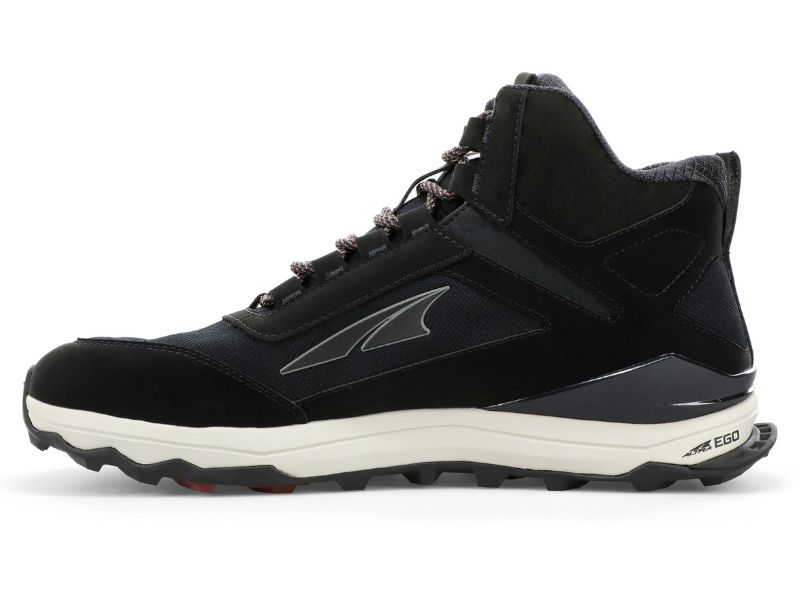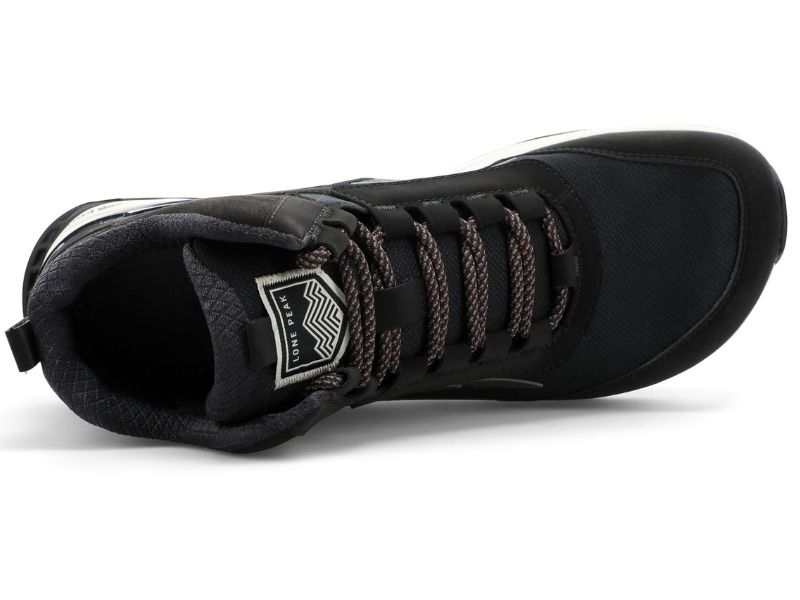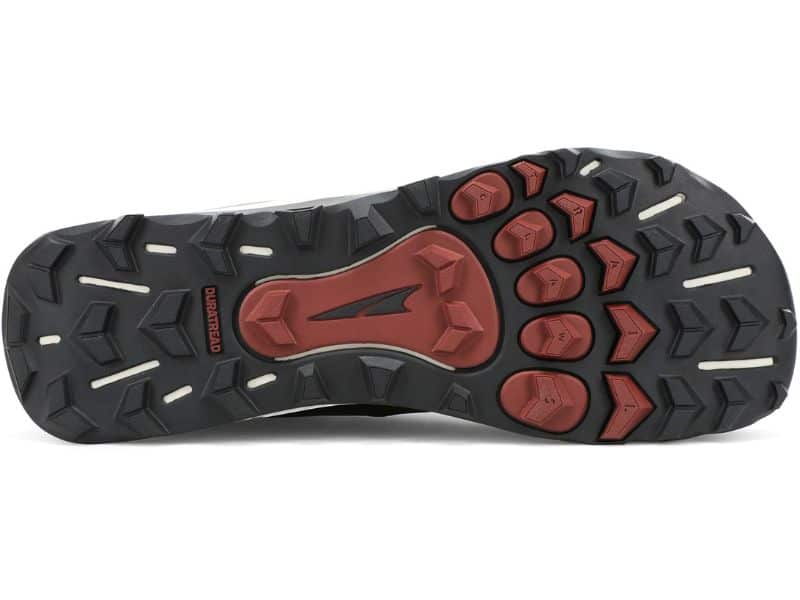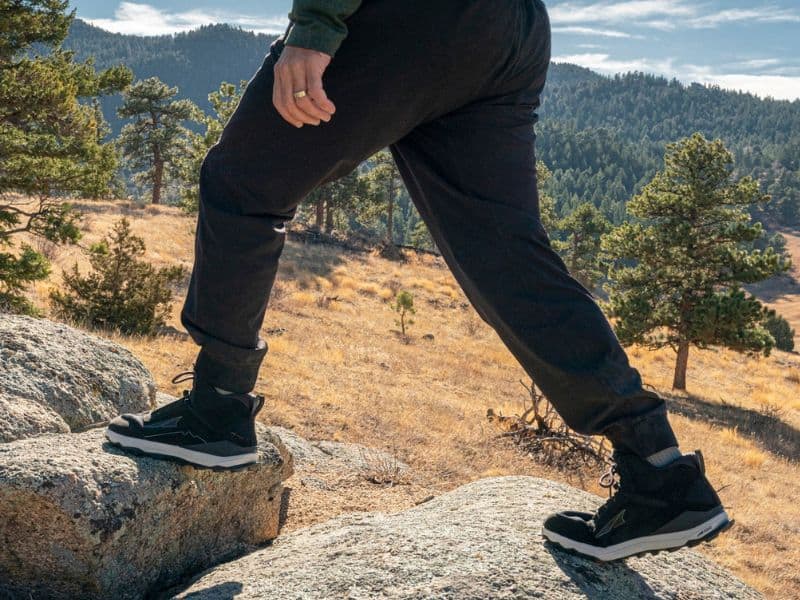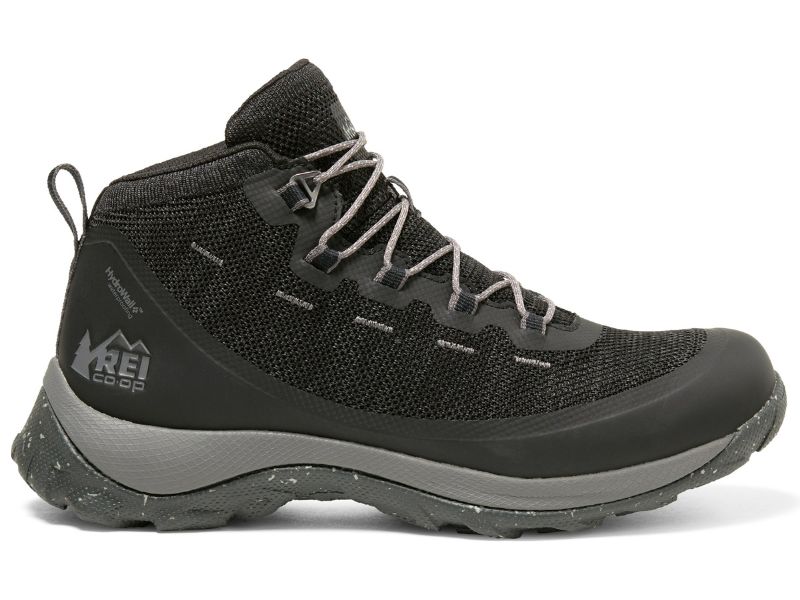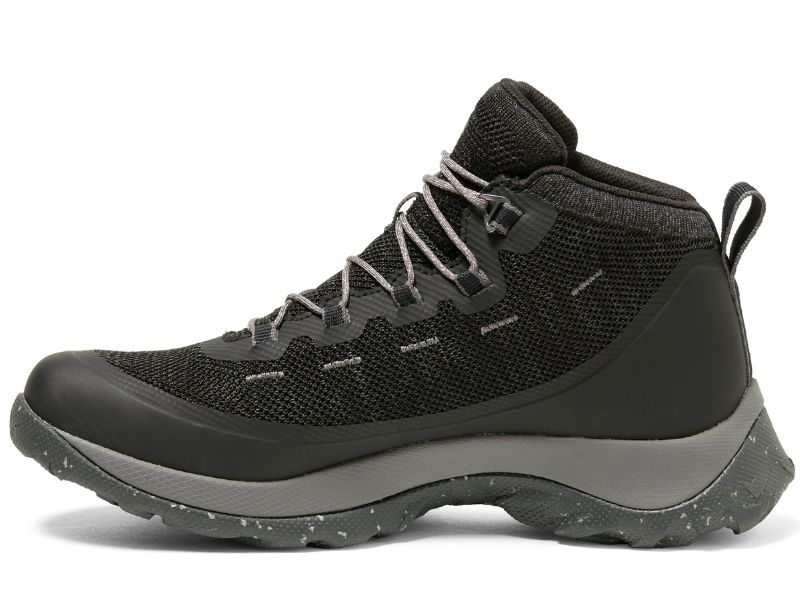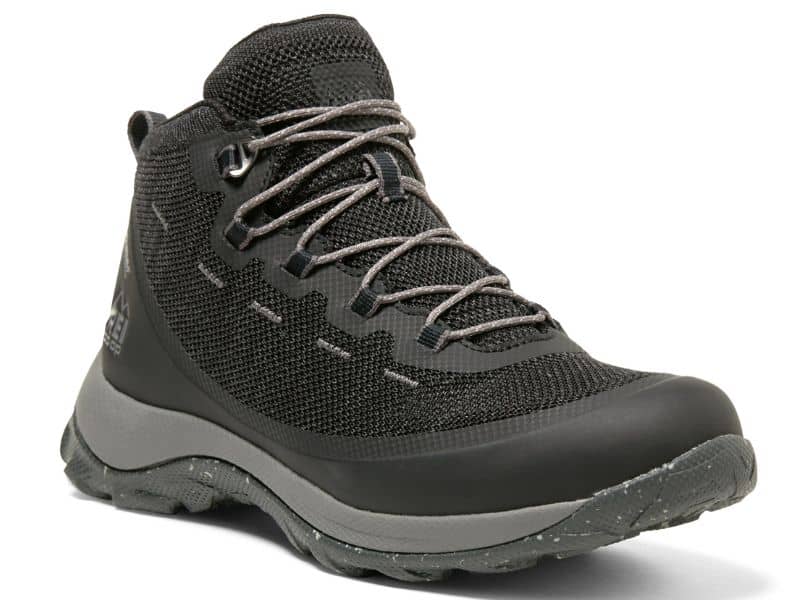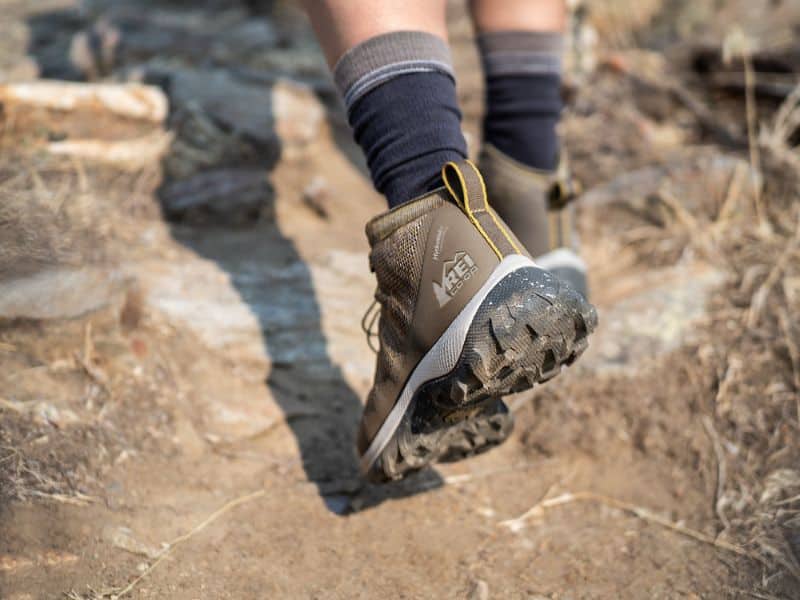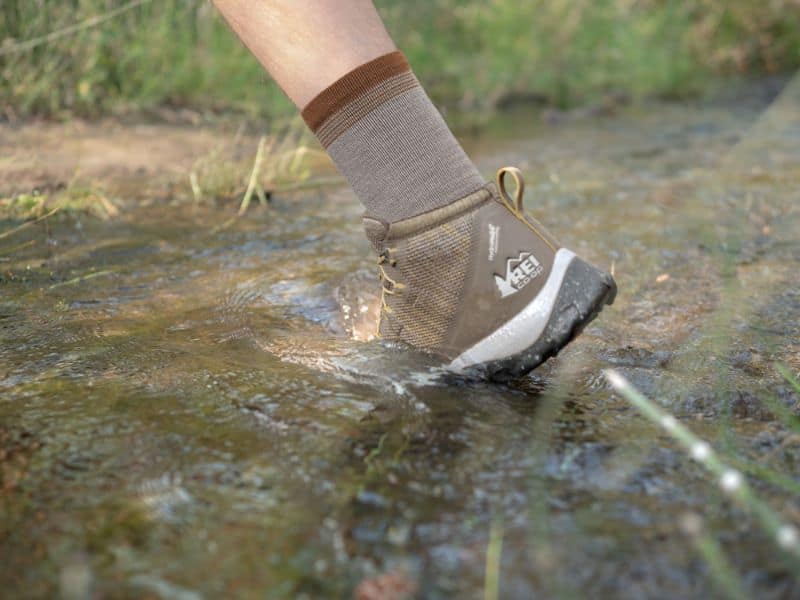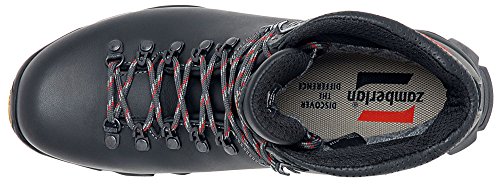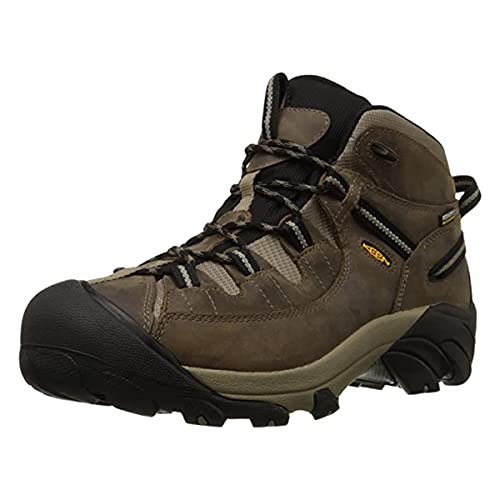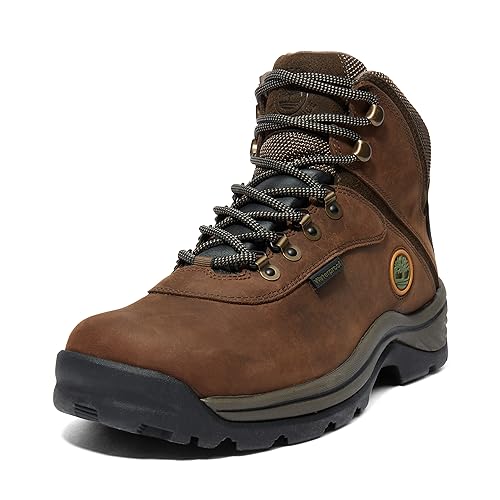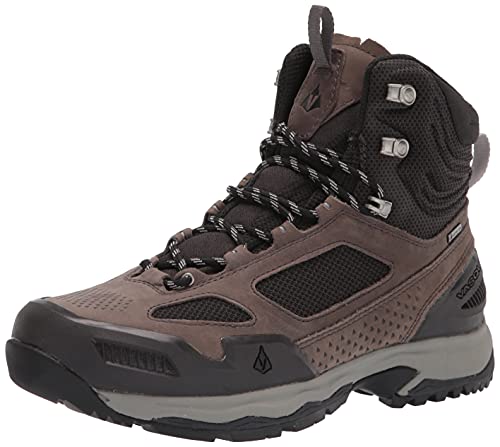No hiking gear kit has more of an impact on the quality of your trail time than your hiking boots. A great hiking boot will let you cover countless miles in safety and comfort; one that’s less than perfect will turn your hikes into suffer-fests and experiences to be endured rather than enjoyed.
After miles of testing, our award for the best overall hiking boots of 2024 goes to the Salomon Quest 4, which holds the top spot for the third year in a row. These boots are the most comfortable in the business, waterproof, supportive, and provide excellent traction in all terrain types.
If the Quest isn’t the right boots for you we also have reviews of Salomon Quest 4 GTX, Salomon X Ultra 4 Mid GTX, Merrell Moab 2 Mid WP, Lowa Renegade GTX Mid, Altra Lone Peak, REI Co-op Flash, Scarpa Zodiac Plus GTX, Zamberlan Vioz GTX, KEEN Targhee III Mid WP, Asolo Falcon GV, La Sportiva Pyramid GTX, Vasque Breeze AT Mid GTX, La Sportiva Nucleo II High GTX, and Timberland White Ledge.
To help you choose the best hiking boots for you we’ve compiled the following list of criteria you should consider when buying a pair of hiking boots – Comfort and Fit, Support and Stability, Traction, Waterproofing, Breathability, Weight, and Materials & Durability.
Table of Contents
- Quick Recommendations
- What are the Best Hiking Boot Brands & Models?
- Salomon Quest 4 GTX
- Salomon X Ultra 4 Mid GTX
- Merrell Moab 2 Mid WP
- Lowa Renegade GTX Mid
- Altra Lone Peak Hiker Boots
- REI Co-op Flash
- Scarpa Zodiac Plus GTX
- Zamberlan Vioz GTX
- KEEN Targhee III Mid WP
- Asolo Falcon GV
- La Sportiva Pyramid GTX
- Timberland White Ledge
- Vasque Breeze AT Mid GTX
- La Sportiva Nucleo II High GTX
- Hiking Boot Comparison Table
- Top Choices by Category
- How to choose a great pair of walking boots?
- Hiking Boots vs. Hiking Shoes
- What are the best cheap hiking boots?
- What are the best hiking boots for wide feet?
- FAQ
- Best hiking boots reviews: The Verdict
Quick Recommendations
-
Editor’s Choice:
Salomon Quest 4 GTX
“Offer a great blend of stability, cushioning, traction, support, waterproofing, and comfort in spades.” -
Best Lightweight Hiking Boots:
Salomon X Ultra 4 Mid GTX
“Striking a great balance between weight and performance, the X Ultras are great for those who like to travel fast and light.” -
Best Value Lightweight:
Merrell Moab 2 Mid WP
“A comfortable and breathable boot that won’t break the bank.” -
Best for Hauling Heavy Loads:
Lowa Renegade GTX Mid
“Strong, sturdy, supportive, and surprisingly lightweight for such a robust boot. Great for hauling heavy backpacks on thru-hikes.” -
Best Ultralight:
Altra Lone Peak Hiker Boots
“Feels just like a trail running shoe with extra stability and protection.” -
Best Vegan Hiking Boots:
REI Co-op Flash
“A lightweight, vegan-friendly hiking boot to tackle easy day hikes.” -
Best Boot for Technical Terrain:
Scarpa Zodiac Plus GTX
“Great traction and our go-to for tackling snowy alpine or rocky terrain.” -
Best Leather Hiking Boots:
Zamberlan Vioz GTX
“A bombproof and beautiful traditional leather boot that’s perfect if you need a heavyweight boot for hiking tough trails with heavy packs.” -
Best for Wide Feet:
KEEN Targhee III Mid WP
“An affordable, comfortable boot with a slightly more forgiving fit across the forefoot.” -
Best Waterproof Hiking Boots:
Asolo Falcon GV
“A lightweight/midweight hybrid with excellent waterproofing and comfort. Excellent craftsmanship and quality.” -
Best Backpacking Boots:
La Sportiva Pyramid GTX
“Thanks to its low weight, great traction, good support, and all-around ruggedness, the Pyramid GTX is our go-to boot for backpacking trips.” -
Best Budget Hiking Boots:
Timberland White Ledge Men’s Boot
“Waterproof, comfortable, and built to last. A steal at the price.” -
Best Runner up Budget Hiking Boots:
Vasque Breeze AT Mid GTX
“A little heavier than its peers, but very fairly priced, sturdy, supportive, and grippy in varied terrain.” -
Honorable Mention:
La Sportiva Nucleo II High GTX
“A lightweight and agile boot designed to keep your feet dry, comfortable, and well-protected on scrambles and hikes in tougher terrain.”
What are the Best Hiking Boot Brands & Models?
Top brands such as Salomon, La Sportiva, Lowa, Merrell and others are all represented in our shortlist of tested hiking boots – the list below offers great variety to help you find the best hiking boots for you.
- Salomon Quest 4 GTX
- Salomon X Ultra 4 Mid GTX
- Merrell Moab 2 Mid WP
- Lowa Renegade GTX Mid
- Altra Lone Peak Hiker Boots
- REI Co-op Flash
- Scarpa Zodiac Plus GTX
- Zamberlan Vioz GTX
- KEEN Targhee III Mid WP
- Asolo Falcon GV
- La Sportiva Pyramid GTX
- Vasque Breeze AT Mid GTX
- La Sportiva Nucleo II High GTX
- Timberland White Ledge Men’s Boot
Salomon Quest 4 GTX
Editor’s ChoiceClass: Midweight ⸱ Weight: 2 lbs. 14.4 oz. ⸱ Waterproofing: GTX ⸱ Upper: Leather/Textile
After a month of testing, the Salomon Quest 4 GTX once again earned our testers’ vote as the best hiking boots for men (and women) out there. This is the Quest’s fourth iteration and with each new update it just gets better and better. Very few hiking boots out there score highly in every metric, but it manages to do just that.
These boots are designed to handle all the trail has to throw at them and keep your feet dry and comfortable in the process.
The Quest builds off an updated ADV-C chassis, which provides great support and stability. Deep aggressive lugs and the Contagrip® TD rubber outsole provide awesome traction and grip in loose or muddy terrain, while the Gore-Tex liner ensures your feet stay when hiking in wet weather.
One area that improves the overall fit compared to competitors is the Quest’s lacing system, which allows you to lock your heel in place while allowing for adjustability when needed. We found this not only makes them feel great but improves stability and reduces the risk of chafing and blisters.
The Quest are often praised for their sneaker-like comfort, and we’d be loath to disagree. Their beefy, springy EVA midsole makes them one of the most cushioned boots we’ve ever tried, and there’s ample padding around the ankles and in the tongue to keep your feet happy on long days on the trail.
We’re also big fans of the Quest’s mixed leather and textile upper. While not the most durable boot on our list, this combo strikes the sweet spot between durability and breathability and allows them to perform well in both warm and cooler conditions.
At 2 lbs. 14 oz., the Quest is one of the heavier boots we tested, weighing 5 to 6 ounces more than the lightest midweight models such as the Scapa Zodiac or the Lowa Renegade. While the upgrade in performance is well worth it in our opinion, not everyone will be willing to haul that much weight around on their feet.
It’s also worth mentioning that the Quest are likely to be overkill for certain applications. If you hike in dry, warm climates, for example, the breathability of the Moab 2 (below) makes them a far more suitable pick. And if you tend to throw in a bit of scrambling on your hikes, a more technical boot like the Scarpa Zodiac Plus will serve you better.
Click here for Women’s Version.
PROs
- Rugged
- Well balanced
- Waterproof
- Supportive
- As comfortable as they come
CONs
- Heavy for most day hikes
- High price
- Breathability in hot weather
Bottom-Line: The Salomon Quest 4 are our top pick for best men’s hiking boots again this year, thanks to their great metrics across the board.
Salomon X Ultra 4 Mid GTX
Best Lightweight Hiking BootClass: Lightweight ⸱ Weight: 1 lb. 14.4 oz. ⸱ Waterproofing: GTX ⸱ Upper: Textile/Leather Upper
While not the lightest hiking boot we reviewed, the X Ultra 4 Mid GTX win our best lightweight hiking boot award due to offering a reduced weight without compromising on important attributes like stability, support, or traction.
Like other Solomon boots such as the Quest, the X Ultra is built around Salomon’s hugely comfortable and supportive ADV-C chassis. However, while the Quest offers a very rugged feel, the X Ultra 4 is a pound lighter and feels more like a trail running shoe, making it a great pick if you want to travel fast and light or are prone to leg fatigue on long trail days.
While you could opt for something like the Altra Lone Peak Hiker Boots, which are over 7 ounces lighter, or a pair of hiking shoes, we feel that X Ultra’s extra weight is worth it for the improved protection, stability, and traction, not to mention its Gore-Tex liner.
The downside to having such a flexible light hiking boot is that challenging technical terrain will remain…challenging. If you want lightweight hiking boots with a bit more technical performance, then we recommend the Asolo Falcon and the La Sportiva Pyramid, both of which are a touch stiffer and more supportive.
Click here for Women’s Version.
PROs
- Lightweight
- Feel like trail runners
- Flexible
- Comfortable straight out of the box
- Good arch support
- Gore-Tex liner
CONs
- Cushioning is a little thin
- Not suited for rough terrain
- Lacks traction on smooth rocky terrain
Bottom-Line: Lightweight, flexible, and superbly comfortable hiking boots that are ideal for hikers who like to move fast.
Merrell Moab 2 Mid WP
Best Value LightweightClass: Lightweight ⸱ Weight: 2 lbs. 4 oz. ⸱ Waterproofing: M Select ⸱ Upper: Mesh/Leather Upper
The Merrell Moab 2 are the best lightweight hiking boots you buy at a budget price point. They comfortable, well-made, and excellent in warm weather.
This is one of the cheapest pairs of boots we reviewed, but also one of the best in the business for certain applications.
The Moab has been around for some time, and this upgraded version’s minor adjustments have made it just a little better than the originals.
Protecting your feet from the hardships of the trail, the Fit.Eco+ blended-EVA midsoles combined with the Air Cushioning in the heels give a great bouncy feel. The improved insole design, meanwhile, has a more contoured finish to provide more support for your heel and arch.
The Moab 2 are one of the most breathable boots we tested, making them a great pick for hot summer hikes. They also come in a Ventilator model that is a little cheaper and does away with waterproofing completely – ideal if you need a boot for hot hikes in the desert areas of the southwest.
Merrell’s in-house waterproofing M-Select is not the greatest, making them far from the most waterproof hiking boots on the market. If you’re willing to pay extra, however, you can upgrade to a Gore-Tex version of this model, but these will set you back a few more $ and are far less breathable.
The other downside is that the Moab 2 are not particularly supportive, making them more suited for well-maintained trails. If you need a little more support and stability without breaking the bank, then upgrading to the Vasque Breeze AT would be a good shout.
If your foot shape runs a little wide, then the KEEN Targhee III is a very similar boot in terms of price and performance but has a wider fit.
Click here for Women’s Version.
PROs
- Excellent comfort and fit
- Superb price tag
- Very breathable
- Lightweight
CONs
- M Select waterproofing can’t match Gore-Tex
- Soles aren’t the sturdiest
- Lacks support on more rocky ground
Bottom-Line: The Merrell Moab 2 is an affordable boot that is great for fair-weather day hikers who hike easy to moderate trails.
Lowa Renegade GTX Mid
Best for Hauling Heavy LoadsClass: Midweight ⸱ Weight: 2 lbs. 7 oz. ⸱ Waterproofing: GTX ⸱ Upper: Nubuck Leather
The Lowa Renegade GTX Mid was one of the most comfortable hiking boots we tested, providing superb support and protection for your feet on rocky and rugged trails.
Despite the all-leather uppers, full-length nylon shank, and thick Vibram rubber outsole, the Renegade is one of the lightest boots in its class, tipping the scales at just 2 lbs. 7 oz.
The Renegade is a classic-looking mid-cut boot that offers great ankle support, even when carrying heavy loads, thanks to its polyurethane Monowrap frame. The polyurethane cuts some weight from the boot and gives a sturdier and more supportive feel. The slightly higher ankle cuff helps protect from scrapes, bumps, and debris ingress while still providing a comfortable fit.
The Renegade is one of the lightest midweight hiking boots to offer this level of ankle support and stability. This makes them an excellent choice if you need more support carrying heavier loads or if your hiking and backpacking trips take you over more technical terrain. (If you plan on taking on long thru-hikes like the Appalachian Trail or CDT, the Renegade are a great pick.)
If we’re going to be picky about shortcomings, then we’d zone in on the lacing system, which made it tricky at times to find the perfect fit. While the Renegade offers more cushioning than the Salomon Quest, the ability to provide a precision fit is why the heavier Quest stole the top award.
Click here for Women’s Version.
PROs
- Lightweight for its class
- Great support and stability
- Comfortable mid-height ankle cuff
- Waterproof
CONs
- Lacing is troublesome
- Quite pricey
Bottom-Line: A great pick if you’re looking for extra support and stability without paying a penalty in terms of weight. Among the best waterproof hiking boots and best leather hiking boots out there at this price.
Altra Lone Peak Hiker Boots
Best UltralightClass: Lightweight ⸱ Weight: 1 lb. 7 oz. ⸱ Waterproofing: eVent ⸱ Upper: Synthetic
The Lone Peak Hiker is the perfect hiking boot for hikers making the step up from lightweight trail shoes to full-height trail boots. It maintains all the comfort of the sneakers the brand is famous for whilst packing much more in the way of support and stability.
The standout feature is the 1 lb. 7 oz. weight, making them the lightest hiking boots on our list and over half-pound lighter than their closest rival in this category, the Salomon X Ultra 4.
As a step up from running shoes, Altra has made the ankle collar a little higher cut, giving them a beefier outsole lug design, and added a little more cushioning to the footbed. Their Balanced Cushioning™ platform is designed to reduce heel dropping on ascents. Our testers appreciated the roomy toe box and flexible design, both of which also make for a comfortable ride.
There are several compromises that Altra had to make to keep weight down. The all-synthetic upper offers little in the way of protection and can’t match the durability of a suede/leather boot or hiking shoe. The pair we’ve reviewed here are non-waterproof hiking boots, although Altra does make an all-weather version that costs a little more.
Click here for Women’s Version.
PROs
- Very lightweight
- Wide toe box
- Great flexibility/comfort
- Feel like lightweight trail shoes
CONs
- Offers little protection
- Traction could be improved
- Non-waterproof boot
Bottom-Line: If you like the feel of trail runners but want a touch more stability, then Altra Lone Peak are our pick as the best ultralight boots.
REI Co-op Flash
Best Vegan Hiking BootsClass: Lightweight ⸱ Weight: 2 lbs. 2 oz. ⸱ Waterproofing: Hydrowall ⸱ Upper: FirmaKnit™ Polyester
The REI Co-op Flash scoop our award for best vegan hiking boots thanks to their all-vegan construction and solid performance in most metrics.
The REI Co-op Flash are the “odd one out” in our line-up with the unique polyester knitted upper giving the Flash a look all of its own. Aside from aesthetics, the Flash are a flexible, lightweight, and breathable pair of boots most suited to easy-going day hikes.
The knitted polyester may be great for breathability, but it lacks the durability of suede, nubuck, or leather. And because it has only a midfoot shank and limited stiffness coming from the knit design, don’t expect the support and stability you’d get from lightweight peers like the Salomon X Ultra or the Merrell Moab.
REI does a good job of using recycled materials and algae-based foam to make these waterproof shoes more environmentally friendly. Overall, this is a fun and interesting lightweight boot that works well for easy to moderate trails, but don’t expect it to be as durable as its peers.
PROs
- Lightweight
- Price
- Waterproof yet breathable
- Ethically made
CONs
- Durability
- The top metal rivet can rub against the ankle without good socks
Bottom-Line: If you’re looking for a cheap, ethical, lightweight hiking boot for easy day hiking (and don’t mind compromising on support and ruggedness), then the vegan-friendly REI Flash is a great choice.
Scarpa Zodiac Plus GTX
Best Boot for Technical TerrainClass: Midweight ⸱ Weight: 2 lbs. 6.4 oz. ⸱ Waterproofing: GTX ⸱ Upper: Suede Upper
The Scarpa Zodiac Plus was our testers’ favorite hiking boots for days when extra support, stability, and technical performance was required.
The Zodiac Plus excels on rugged terrain, rock scrambling, and snowy trails, where its superb traction and stability put it ahead of its competitors in these categories. The Salomon Quest 4 comes a close second but doesn’t quite match the performance of the Zodiac Plus, which, at just 2 lbs. 6 ounces, is considerably lighter.
It’s hard to knock the Zodiac Plus, but if your typical trail is well-maintained and free from extra-steep ascents and tricky descents, then they will likely be overkill for your needs. We’d recommend you look at either the Asolo Falcon or the X Ultra from Salomon depending on your preference for weight vs support and stability.
While the Zodiac Plus offers better traction and stability, it narrowly lost out on the top prize to the Salomon Quest due to the Quest’s superior comfort and fit. That said, if you need to trust your tread, then Zodiac Plus are the better option.
Click here for Women’s Version.
PROs
- Amazing on rocky approaches
- Very durable
- Highly breathable
- Relatively lightweight
CONs
- Overkill for easy-moderate trails
- Asymmetric lacing could use a redesign
- Price
Bottom-Line: An awesome boot for tackling scrambles, snowy alpine terrain, or rugged trails.
Zamberlan Vioz GTX
Best Leather Hiking BootsClass: Heavyweight ⸱ Weight: 3 lbs. 8 oz. ⸱ Waterproofing: GTX ⸱ Upper: Full-grain Leather Upper
The Zamberlan Vioz are the ideal hiking boots for hikers who want wear-anywhere ruggedness and the stability and support of heavier boots.
The Zamberlan Vioz is everything you would imagine in a pair of traditional, heavyweight leather boots for hiking. Made for more serious treks with heavy pack weights, and even a little light mountaineering, the Vioz provides some of the best traction, stability, and durability in our hiking boot reviews.
The full-length thermoplastic urethane shank and stiff leather uppers make for one very rigid boot that offers great stability, even on precarious terrain. Combine that with the Vibram® rubber outsoles, polyurethane midsoles, and the padded, soft interior, and you have one of the burliest, most supportive boots out there, and one of the best hiking boots for hauling heavy loads.
The stiff leather design also gives you solid toe protection and durability. Add to this the fact that the Vibram sole is resoleable, and these boots will last for years.
The downside to the Vioz is their weight. At 3 lbs. and 8 ounces, the Vioz are heavier than other boots we tested – a huge 9 ounces more than the next heaviest, the Salomon Quest. The stiff leather will also require a longer break-in time.
Click here for Women’s Version.
PROs
- Great support and stability
- Extremely comfortable
- Durable, tough leather upper
- Resoleable
CONs
- Heavy
- Stiff boots (require a long break-in time)
Bottom-Line: If you need a heavy-duty and durable boot for occasional alpine climbs, rocky trails, and poor weather conditions, then the Zamberlan Vioz is a good shout.
KEEN Targhee III Mid WP
Best for Wide FeetClass: Lightweight ⸱ Weight: 2 lbs. 2.8 oz. ⸱ Waterproofing: KEEN.Dry ⸱ Upper: Nubuck Leather
The KEEN Targhee III offers superb comfort, good traction, impressive durability, and a roomier fit that makes it the best hiking boot for wide foot out there. It’s also cheap and relatively lightweight for a leather boot.
At 2 lbs. 2.8 oz., the KEEN Targhee is a lightweight pick that still provides good protection and durability despite its low price.
While made with tough nubuck leather, the Targhee doesn’t need much of a break-in period – it’s trail-ready straight out of the box. The interiors are soft and hug your feet, with dual-density midsoles providing more than enough cushion for your average trail. Our testers also remarked that the deep lugs offer great traction even in muddy conditions.
The Targhee does lack some of the support of midweight boots such as the Scarpa Zodiac Plus or Lowa Renegade, which are not that much heavier (although are pricier).
It was also a close runner-up to our value pick, the Merrell Moab 2. While the Targhee is more durable, it tends to run wide so is not so great for folks with narrow feet. It is also less breathable and more expensive than the Moab, which ultimately just gets the nod.
If you’re in the market for a boot with a wide fit, we also highly recommend Salomon’s X Ultra 3 Mid GTX hiking boots, which is available in both a men’s version and a women’s version.
Click here for Keen Targhee III Mid WP Women’s Version.
PROs
- Great Price
- Great traction
- Very comfortable
- Robust
CONs
- Not the greatest durability
- Lacks some breathability
- Wide fit won’t suit folks with narrow feet
Bottom-Line: The KEEN Targhee III Mid is a comfortable boot that offers good traction at an affordable price. The fit is great for folks with wider feet.
Asolo Falcon GV
Best Waterproof Hiking BootsClass: Midweight ⸱ Weight: 2 lbs. 2.6 oz. ⸱ Waterproofing: GTX ⸱ Upper: Suede Upper
The Asolo Falcon GV scoop our award for Best Waterproof Hiking boots owing to their great waterproofing, brilliant craftsmanship, and excellent out-of-the-box comfort. The suede leather and Gore-Tex liners combine to make this boot breathable yet extremely waterproof.
At 2 lbs. 3 oz., the Falcon is light for a boot classed as midweight, although this does mean that it doesn’t offer the same stability as peers like the Lowa Renegade or the Scarpa Zodiac Plus (both 4 ounces heavier).
Providing more support and stability than a lightweight boot, but not as much as is typical for a midweight one, this uniquely places the Falcon somewhere between lightweight options like the La Sportiva Pyramid or the Merrell Moab and its midweight competitors.
Despite this, the Falcon still performs admirably and our testers recommend it for tougher hikes. However, if you would feel safer with the extra ankle support, then opt for a heavier boot like recommend the Quest, which offers a big step up in terms of performance. Unfortunately, thanks to the Falcon’s lug design, it is not the greatest on muddy trails, which is disappointing considering how well it performs in wet conditions otherwise.
Click here for Women’s Version.
PROs
- Superb out-of-the-box comfort
- Quality construction and build
- Excellent waterproof boot
CONs
- Expensive
- Less supportive
- Sole pattern lacks traction on muddy trails
Bottom-Line: The Asolo Falcon GV is a well-built boot with excellent comfort and waterproofing.
La Sportiva Pyramid GTX
Best Backpacking BootsClass: Lightweight ⸱ Weight: 2 lbs. 1.6 oz. ⸱ Waterproofing: GTX ⸱ Upper: Nubuck Leather/Mesh
The La Sportiva Pyramid is one of our favorite lightweight waterproof boots and great for long-term trail travel thanks to its plush cushioning, breathability, ruggedness, and impressive traction.
La Sportiva has added a Gore-Tex Surround to the sides, as well as the top of the upper boot. This upgrade brings a big boost to breathability. Despite this, the boot still performs well when wading through the dew, boggy terrain, or streams.
At only 2 lbs. 1.6 ounces, the low weight makes it a great choice for hikers and backpackers who prefer a lighter and faster trail shoe or boot. The lower weight does mean it’s not as sturdy as some heavier options like the Vioz or the Quest. However, our testers report that the Pyramid is more than capable of handling all but the most technical of ascents and steep descents and is nimble and stiff enough for moderate scrambling.
If you have wider feet, then there are better options out there. Like all La Sportiva footwear, the Pyramid runs narrow and is not available in a wide version. The Asolo Falcon is the closest comparable boot that we would recommend for wider feet.
PROs
- Lightweight
- Waterproof yet breathable
- Great traction on the Vibram sole
CONs
- Runs narrow/small
- Some break-in required
Bottom-Line: A great pair of lightweight waterproof hiking boots for day hikes and backpacking trips on easy to moderate trails
Timberland White Ledge
Best Budget Hiking BootsClass: Midweight ⸱ Weight: 2 lbs. 2 oz. ⸱ Waterproofing: Waterproof leather ⸱ Upper: Leather
The White Ledge wins our vote as the best budget hiking boots for a number of reasons. They’re light, tough, comfortable, waterproof, and are well-made for the price.
The White Ledge is made with full-grain leather that makes it waterproof, supportive, and durable. The leather is supple, so the break-in period is short.
Our testers were pleasantly surprised by this boot’s cushioning, with a plush EVA midsole providing ample underfoot protection and arch support.
We also love this boot’s versatility. While waterproof and rugged, it also outperforms other low-cost models in breathability and weight, weighing just 1 lbs. 2 oz. per size 9 boot. These attributes make it a good choice for both summer and shoulder-season hiking.
Other nice features include a rust-proof, speed lacing system with hooks at the top for more precision fitting, recycled fabric linings, and an aggressive tread pattern with multi-directional lugs that provide good traction and grip in slick, muddy, and loose terrain.
PROs
- Great price
- Comfortable
- Waterproof
- Good traction
CONs
- Lack breathability
- Take a while to break-in
Bottom-Line: A robust, super-comfortable waterproof boot that’s ideal for any hiker seeking a reliable, go-to boot for outings in all kinds of weather at any time of year.
Vasque Breeze AT Mid GTX
Runner Up Budget Hiking BootClass: Midweight ⸱ Weight: 2 lbs. 11 oz. ⸱ Waterproofing: GTX ⸱ Upper: Mesh/Nubuck Leather Upper
Cheap hiking boots that offer great comfort, traction, durability, and support are few and far between, but the Vasque Breeze AT (“All Terrain”) is just that.
The Breeze uses modern materials to give the traditional hiking boot look an update. The boot offers great support and enough stability for tougher trails and days with a heavy pack and is extremely comfortable thanks to a snug-fitting heel, wide toe-box, and cushy padding in the tongue and cuff.
The Breeze uses a mix of Nubuck leather with mesh vents to give the boot some extra breathability, while a Gore-Tex membrane helps keep your feet dry whilst also allowing sweat to escape.
The Breeze AT is pretty heavy and bulky compared to its peers, making it less nimble than other midweight options like the Asolo Falcon or Scarpa Zodiac. However, it does perform better on the trail than lightweights like the Targhee or Moab. In terms of performance, the Lowa Renegade is its closest rival, with the Renegade a lighter but more expensive boot.
Click here for Women’s Version.
PROs
- Great price for a midweight boot
- Very comfortable
- Stable and supportive
- Mesh vents provide good breathability
CONs
- Very heavy/bulky
- Tall collar is stiff
- Takes a while to break-in
Bottom-Line: While heavier than its peers, the Vasque Breeze AT is a good midweight hiking boot at a great price.
La Sportiva Nucleo II High GTX
Honorable MentionClass: Lightweight ⸱ Weight: 2 lbs. 1.6 oz. ⸱ Waterproofing: GTX ⸱ Upper: Nano Cell Mesh/Leather
The La Sportiva Nucleo II are an awesome hiking boots to hikers who want a lightweight, technical, waterproof boot that doesn’t compromise on comfort.
After putting the Nucleo II High GTX through their paces on a few day hikes and a 4-day adventure in their Italian homeland (the Sentiero Roma, if you’re interested), our tester was in love.
The Nucleo are La Sportiva’s latest foray into the lightweight end of the market, weighing just over 2 pounds. But they borrow several features from the brand’s more technical and burlier backpacking and mountaineering boots that set them apart from other lightweight competitors.
The Nucleo are tough. While most other hiking boots in this weight class are distinguished by extensive mesh panels that can tear up if they just look at a rocky surface or patch of thorny scrub, the Nucleo boasts rugged leather uppers with patches of Nano Cell mesh to boost breathability.
Another standout feature is the Gore-Tex Surround liner, which covers both the top of the foot, as per regular membranes, and the footbed and sides. This makes it not only a standout performer in wet weather but more breathable than most other boots with so rugged a build.
Click here for the Women’s Version.
PROs
- Tough for such a lightweight boot
- Gore-Tex liner
- Breathable
- Very comfortable
- Grippy outsole
CONs
- Quite pricey
- A touch on the narrow side
Bottom-Line: An innovative boot that combines a brilliantly light weight with surprising ruggedness.
Hiking Boot Comparison Table
| roduct Name | Class | Weight | Waterproofing | Upper |
|---|---|---|---|---|
| Salomon Quest 4 GTX | Midweight | 2 lbs. 14.4 oz. | GTX | Leather/Textile |
| Salomon X Ultra 4 Mid GTX | Lightweight | 1 lb. 14.4 oz. | GTX | Textile/Leather Upper |
| Merrell Moab 2 Mid WP | Lightweight | 2 lbs. 4 oz. | M Select | Mesh/Leather Upper |
| Lowa Renegade GTX Mid | Midweight | 2 lbs. 7 oz. | GTX | Nubuck Leather |
| Altra Lone Peak Hiker Boots | Lightweight | 1 lb. 7 oz. | eVent | Synthetic |
| REI Co-Op Flash | Lightweight | 2 lbs. 2 oz. | Hydrowall | FirmaKnit™ Polyester |
| Scarpa Zodiac Plus GTX | Midweight | 2 lbs. 6.4 oz. | GTX | Suede Upper |
| Zamberlan Vioz GTX | Heavyweight | 3 lbs. 8 oz. | GTX | Full-grain Leather Upper |
| KEEN Targhee III Mid WP | Lightweight | 2 lbs. 2.8 oz. | KEEN.Dry | Nubuck Leather |
| Asolo Falcon GV | Midweight | 2 lbs. 2.6 oz. | GTX | Suede Upper |
| La Sportiva Pyramid GTX | Lightweight | 2 lbs. 1.6 oz. | GTX | Nubuck Leather/Mesh |
| Timberland White Ledge | Midweight | 2 lbs. 2 oz. | Waterproof leather | Leather |
| Vasque Breeze AT Mid GTX | Midweight | 2 lbs. 11 oz. | GTX | Mesh/Nubuck Leather Upper |
| La Sportiva Nucleo II High GTX | Lightweight | 2 lbs. 1.6 oz. | GTX | Nano Cell Mesh/Leather |
Top Choices by Category
Budget: Vasque Breeze AT Mid GTX and Merrell Moab 2 Mid WP
Comfort: Salomon Quest 4 GTX, Merrell Moab 2 Mid WP, and Altra Lone Peak Hiker Boots
Support: Zamberlan Vioz GTX, Scarpa Zodiac Plus GTX, and Lowa Renegade GTX Mid
Traction: Salomon Quest 4 GTX and Scarpa Zodiac Plus GTX
Lightweight: Salomon X Ultra 4 Mid GTX, Altra Lone Peak, Merrell Moab 2 Mid WP, and La Sportiva Nucleo II
Leather: Zamberlan Vioz GTX and Lowa Renegade GTX Mid
Waterproof: Asolo Falcon GV, Salomon Quest 4 GTX, and Scarpa Zodiac Plus GTX
How to choose a great pair of walking boots?
When looking for a pair of good hiking boots we recommend you take into consideration the following criteria.
- Comfort and Fit
- Support and Stability
- Traction
- Waterproofing
- Breathability
- Weight
- Materials & Durability

Comfort and Fit
Comfort is the most important thing to consider when choosing hiking footwear, which is why fit should be your top priority when buying. Hiking footwear that doesn’t fit well in the toebox, around the ankles, across the forefoot, at the heel, or around the calf will cause blisters and discomfort after just an hour or two on the trail.
Knowing whether you need extra cushioning, arch, or ankle support can help to match you with the right pair of hiking boots for you. They will quickly become your best trail buddies, rather than your worst frenemies.
Comfort is a largely subjective metric, so it’s tricky to say which boots will score the highest for you. Nevertheless, we can make a few more general observations to steer you in the right direction.
As mentioned above, the Salomon Quest are the kings/queens of comfort. Their beefy midsole, plush padding, and chassis all combine to give them a sneaker-like but supportive feel. The same can be said of the Merrell Moab, whose blended EVA midsole and air-cushioned heels make them a pleasure to wear.
If you have wider feet, then the Keen Targhee’s roomy toebox and wider forefoot make them the best option.
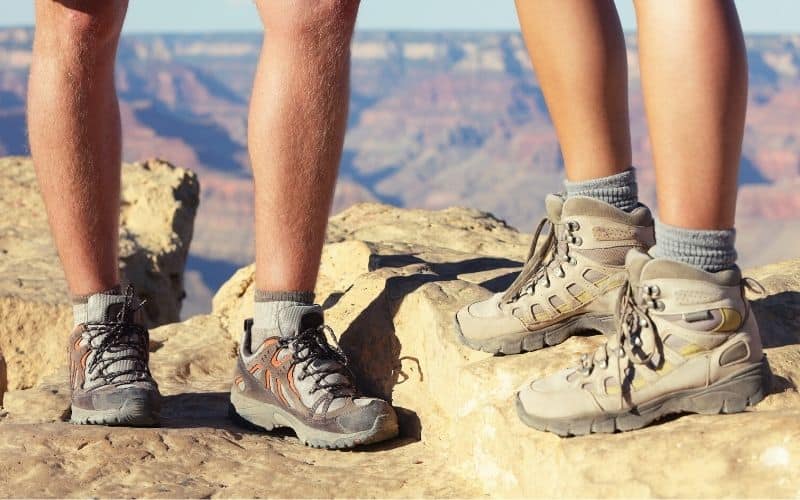
Support And Stability
We would choose hiking boots over wearing sneakers or shoes, as they are designed to provide more ankle support and stability over long treks and rugged terrain.
To add rigidness and improve stability, a shank (a 3-5mm thick piece of hard plastic) is inserted between the outsole and the boot’s midsole. The length of the shank varies depending on intended use but can range from being just under the arch to the full length of the boots. In short, the longer the shank, the stiffer the boot.
There is an almost direct correlation between a boot’s rigidity and its technical abilities. At one end of the scale, you have unyielding mountaineering boots that are designed to handle long summit hikes; at the other end, there are a few lightweight options that may not have a shank at all.
While it may be fairly obvious that a stiffer boot will provide more stability, an overlooked advantage is that they also reduce calf fatigue on ascents. During ascents, your heel will want to drop, and a stiffer boot will prevent this, meaning fewer muscle aches as you climb.
If you’re embarking on longer trips with heavier packs, bushwhacking, or will be traveling over rough ground, then a stiffer boot with increased ankle support is your best bet. Options such as the Scarpa Zodiac Plus or the Lowa Renegade are top picks when the trail gets tougher.
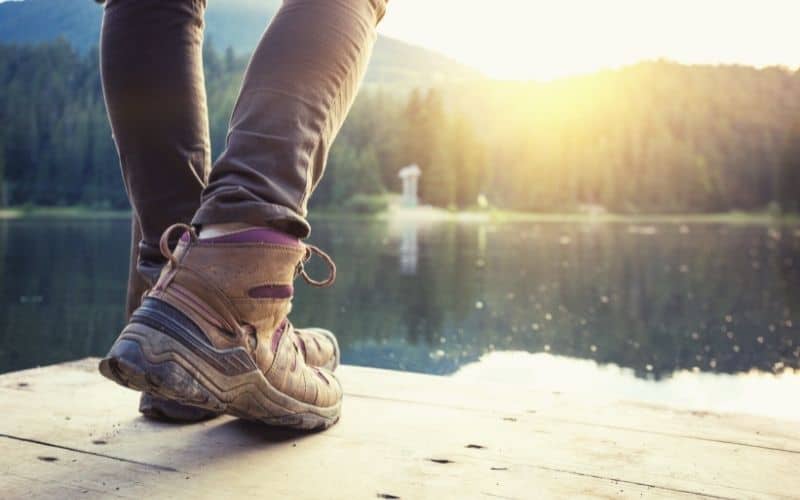
Flexible lightweight footwear such as the Salomon X Ultra 4 or La Sportiva Pyramid are recommended for flatter or less technical trails.
When considering the stability of a boot, the heel brake (the sole area under your heel) is another area to consider. The heel brake, as its name suggests, is there to prevent slides and slips on steep descents. A more prominent heel brake will be seen in a more technical boot than a lightweight hiking shoe or boot such as the Altra Lone Peak.
Contrary to popular belief, high-collar hiking boots don’t provide greater ankle support than mid (or low) collar ones. According to a 2014 study by the Journal of Foot and Ankle Research, they may inhibit your ankles from engaging on inclined surfaces.
So why bother with high-cut boots? While they may not offer ankle support, they do three things better than mid- or low-cut boots/shoes:
- Reduce debris ingress around the ankle, meaning less rubbing and blisters
- Protect your ankles from scrapes and bumps
- Keep your feet/ankles drier during wet and cold hikes in winter or shoulder-season
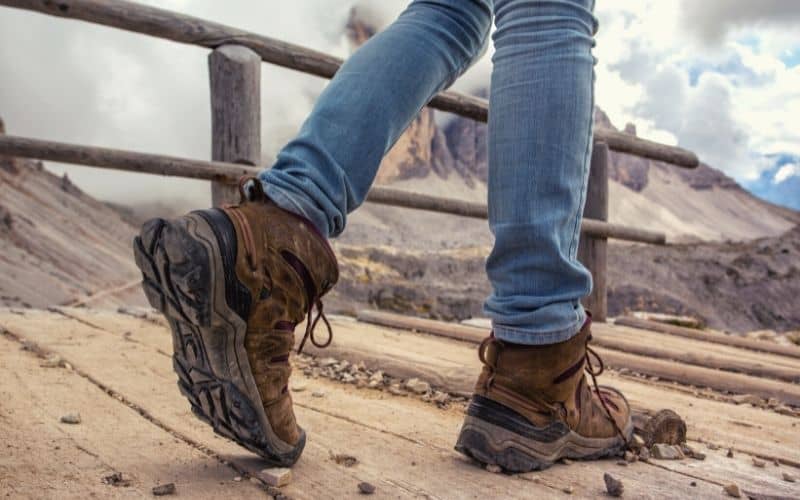
Traction
One of the key reasons to choose a hiking boot over sandals or trail running shoes is the superior traction they offer. Because of this, hiking boots are the best bet when any hike is rocky, slippery, muddy, or steep.
When it comes to traction, there are three things to consider, the rubber composition, the tread design, and the depth of the lugs.
Softer, sticky rubbers are much better for rock scrambling but will wear through quicker. If you expect a wet trail, then you are better to go for larger, deeper, more aggressive lugs that will give you a better grip on muddy and slippery surfaces.
You may notice that the majority of hiking boots use Vibram® outsoles, although a few brands, like Salomon, use Contragrip® or other types. However, this doesn’t mean that all outsoles can be assumed as uniform though, as Vibram® tailors its outsoles to each different brand and model.
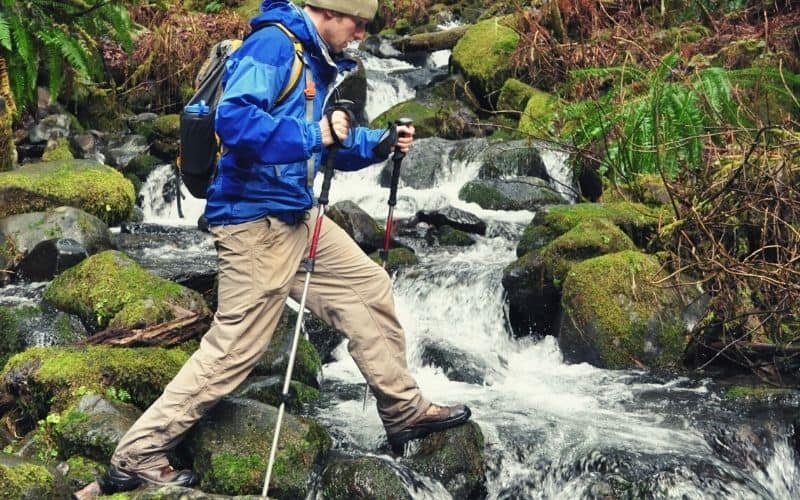
Waterproofing
Waterproofing is a key metric to consider in hiding boots no matter where and when you do your hiking – unless you hike only in deserts, there are sure to be a few puddles, dewy grass, or streams that will soak your feet without it.
Most hiking boots are waterproof to some degree. The majority of designs feature a waterproof/breathable membrane inserted inside the outer fabric, with a water-repellent coating (DWR) added to the outer boot.
Gore-tex (GTX) liners have dominated the waterproof membrane market for years. However, there are several other brands including eVent, M Select by Merrell, and Keen.Dry by Keen, all of which are just as water-resistant and breathable.
Waterproofing is a boon for hiking in wet conditions, but it can have a major impact on the breathability of your hiking boots. A waterproof hiking boot makes it difficult for sweat to escape in warmer weather, which may lead you to have warm, sweaty, and uncomfortable feet.
There is a huge variation in the breathability of different waterproof hiking shoes and boots. However, heavy-duty hiking boots, particularly ones with a leather upper, tend to be the poorest performers.
If you’re not a fan of wet, sweaty feet, and your hiking trips are typically in arid, hot locations, and don’t involve crossing streams, then wearing waterproof boots is like taking a gun to a knife fight, i.e. overkill.
You can still enjoy some water protection without using a waterproof boot by wearing gaiters when need be. Non-waterproof boots and shoes with a breathable mesh upper will get wetter than their waterproof counterparts, but they also dry out faster.
For those of us who don’t tend to hike in dry regions like the southwest, and regularly encounter at least a little rainfall or mud, waterproof boots are the best choice.
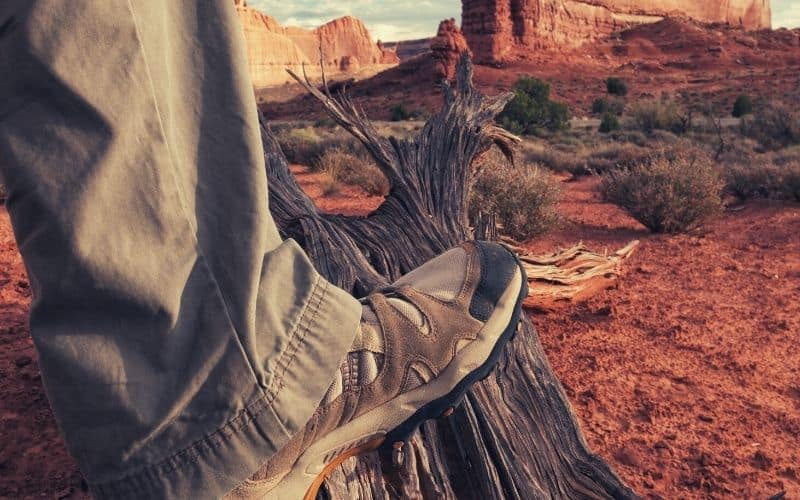
Breathability
Breathability is an important metric to consider when buying hiking boots if you’ll be hiking in warmer conditions. Without it, your feet will become uncomfortably sweaty, which can lead to hotspots and blisters.
The most breathable boots we tested are those with mesh uppers, such as the Merrell Moab. The least breathable are those with Gore-Tex membranes or all-leather uppers, such as the Zamberlan Vioz.
Weight
Weight is another critical metric to consider when choosing your hiking boots.
A quote attributed to Sir Edmund Hillary states that “a pound on your feet equals five on your back”. While there is a touch of hyperbole to the statement, research by the US army has indeed found that small increases in weight on the feet do have a significant impact on leg fatigue and energy expenditure.
We advocate keeping the weight of your boots (or shoes) to the minimum possible. Less weight means less muscle fatigue, less stumbling, and can help prevent knee and hip flexor problems from developing.
Note that we say, the “minimum possible”! Lighter boots tend to offer less protection, support, and stability over the long term.
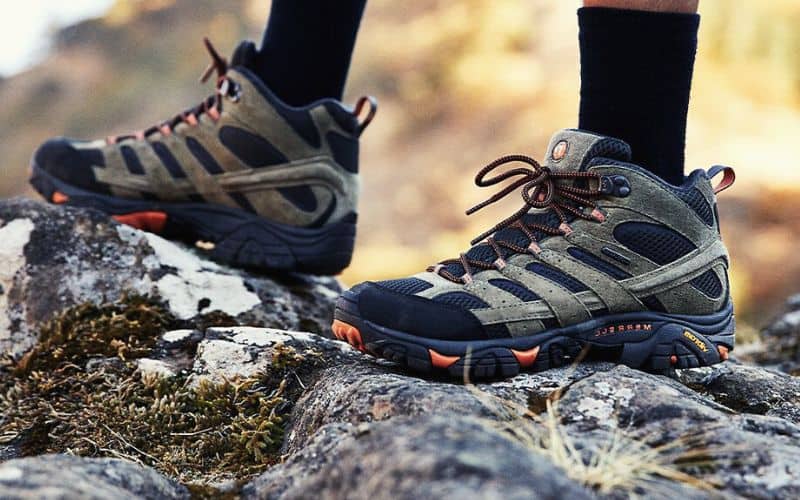
If you know that you’ll be traveling over rough and challenging terrain, then choose a pair at the minimum possible weight that still meets the comfort, support, and traction that you require. This may mean a lightweight trail-runner style for fastpacking, all the way up to a burly boot for trekking through the Andes.
Ultralight thru-hikers heading out on week-long backpacking trips may be the exception to the rule. If you’re going to be walking for weeks (or months) on end, then a lightweight hiking boot or shoe is a good idea.
The boots that made it onto our final testing list range in weight from 1 lb. 7 oz. (Altra Lone Peak,) up to the 3 lbs. 8 oz. (Zamberlan Vioz). Due to its light weight and flexibility, the Lone Peak is best suited to easier to moderate trails. Whereas the Vioz is a hardy boot suited for difficult trail conditions and heavy packs.
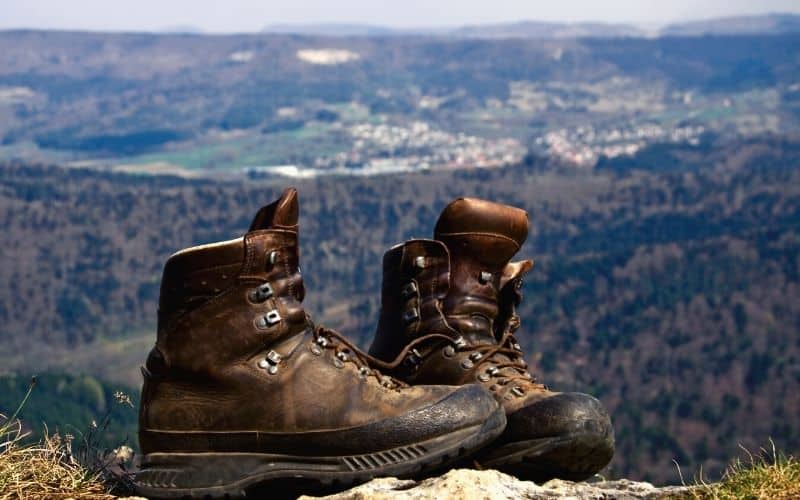
Materials & Durability
The type of material used in hiking boot uppers has an impact on its durability, breathability, and water resistance, so is a key consideration when choosing. Most hiking boots use a combination of three different materials – leather, synthetics, and mesh. Each material has benefits but also drawbacks.
Synthetic nylon and mesh are not great for durability, but help make a boot more breathable. These materials can be found on entry-level boots like the Merrell Moab 2, as well as some mid-tier models, and do a good job of cutting weight. The REI Co-Op Flash takes a novel approach, using a knitted polyester upper to aid breathability.
Nubuck leather, a type of cowhide, is a popular material for mid-range boots, such as the Lowa Renegade and the KEEN Targhee III. It’s lighter and more flexible than traditional leather, but also less durable. However, you will get more mileage out of nubuck leather uppers than nylon or breathable mesh uppers before needing to replace your boots.
At the top end of the scale, full-grain leather is a tough but heavy material that’s not as breathable as mesh or nubuck. Heavy-duty hiking boots with leather uppers like the Zamberlan Vioz GTX are one of the best water-resistant boots out there and a great pick if you’re expecting a combination of rough terrain and poor weather.
Many boots also add rubber to the upper, on areas such as the heels and the toe box, to help lengthen the boot lifespan.
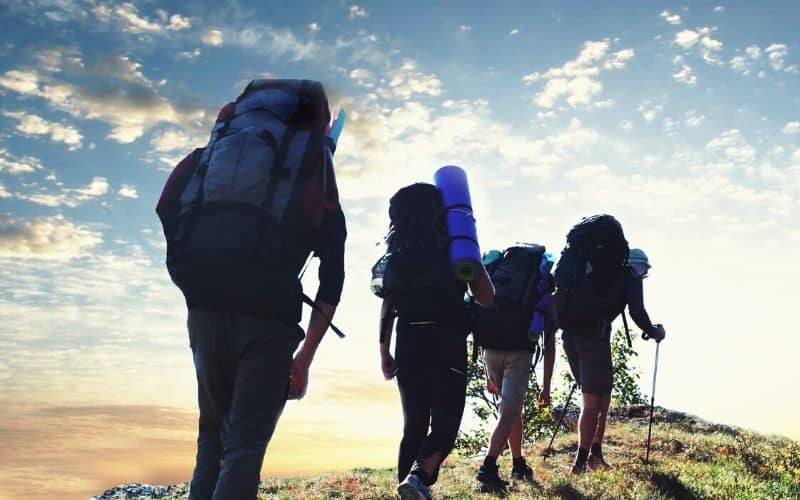
Midsoles
When deciding which pair of hiking boots to buy, take a close look at the midsoles. Covering long distances puts a lot of stress on your feet, particularly if you are carrying a lot of weight. To help lighten the load, the part of the boot known as the midsole plays an important role, mainly as a shock absorber.
The midsoles in most boots are made from either an EVA foam or Polyurethane (PU) – which one you should pick will depend on the terrain you expect to cover and how your own feet react to your hikes.
The majority of hiking boots use EVA foam in the midsole. This type of foam is extremely lightweight and reduces the impact of your footfall. Different compositions of EVA vary from soft to stiff. We recommend a supportive and firm variety for tougher terrain, as this will reduce shock when your feet strike the ground.
To protect your feet from rough terrain, bombproof boots like the Zamberlan Vioz GTX use PU midsoles. This foam has a longer lifespan and is better at handling heavier loads without compressing or deforming.
Socks and Insoles
Socks and insoles aren’t as important a factor to consider as others but still warrant attention because they play a significant role in overall comfort.
Generic, flat insoles can be one of the main issues that stop you from getting the perfect fit you’ve been looking for. This can be solved by buying an aftermarket model specific to your foot size and shape.
New insoles are great because they help fill out shoes, improve the fit under your arch and also increase or decrease cushioning depending on what feels best for you. But keep in mind that inserting insoles might require going up a half size.
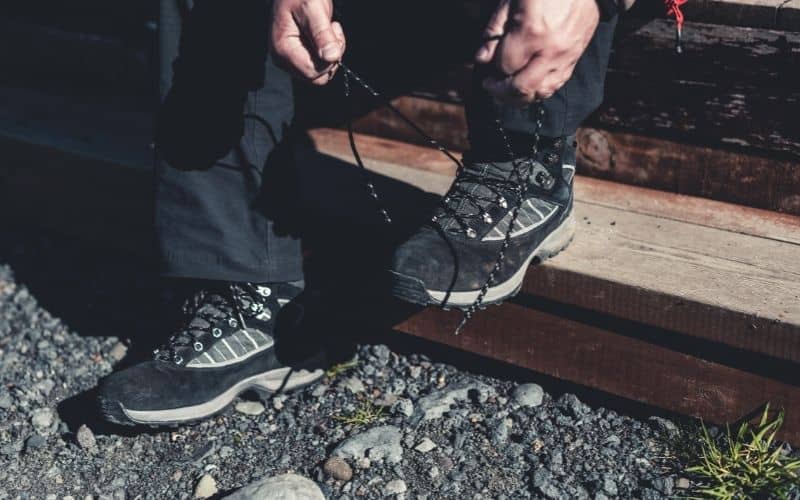
Lacing Systems
Hiking boot laces are an often-overlooked feature yet play an important role in fit and comfort, so are worth paying attention to when choosing your boots. Many boots have poor lacing systems that will result in the boot being too tight or loose, which will inevitably leave you to deal with blisters and sore spots.
If the laces are to blame, then a replacement pair is a quick fix. However, if the design of the lacing system doesn’t fit or hold your foot well, then it’s best to find another boot.
Lock hooks near the bend at your ankle help you get a customized and comfortable fit by allowing you to tie your hiking boots several different ways and allowing adjustment for your feet and the terrain. These are a common feature on more rugged boots like the Lowa Renegade GTX Mid.
Lightweight options like the Altra Lone Peak Hiker Boots typically have simpler designs that are more convenient to slip on and off, however, reduce the ability to customize the fit.
Hiking Boots vs. Hiking Shoes
The decision to choose hiking boots or hiking shoes comes down to where and when you plan on hiking and personal preference Both types of footwear have their pros and cons.
Hiking shoes are lightweight, comfortable, and can offer great traction, but are less supportive and offer less protection than boots. This makes them a better choce for hot climates and hiking well-trodden trails.
Hiking boots are heavy and expensive, but are better for carrying heavy loads, more durable, more supportive and stable, and provide more protection. This makes them a better choice for gnarlier trails, wet weather, and backpacking with heavy packs.
What are the best cheap hiking boots?
The best cheap hiking boots out there are the Timberland White Ledge. These all-leather boots are relatively lightweight, durable, comfortable, waterproof, and exceptionally well-made for the price.
What are the best hiking boots for wide feet?
The best hiking boots for wide feet are the KEEN Targhee III Mid WP. These durable, lightweight leather boots offer excellent comfort, great traction traction, and have a roomier forefoot and toebox that makes them more comfortable for folks with broader feet.
FAQ
How should hiking boots fit?
Hiking boots should fit snug, but not tight. When buying your boots, try them on in the afternoon, when your feet will be more swollen and closer to the volume they’ll have after a few hours of walking on the trails.
How to break in hiking boots?
To break in new hiking boots, wear them around the house for an hour or so each day for starters. After that, wear them on short walks around a nearby park until the upper becomes a little more supple, then take them for a spin on a few shorter hikes before attempting anything longer.
How to tie hiking boots?
To tie your hiking boots with a standard surgeon’s knot, pull your laces tight up to the top eyelets, leaving the two upper lace hooks free. Next, wrap the laces around each other as you would before tying a standard bow but do so twice, then pull the free end of the laces tight and loop them around the first pair of hooks. Do the same with the last pair of lace hooks and finish tying with your standard knot.
You can also tie your hiking boots with Toe-Relief Lacing, Window Lacing (aka “Box Lacing”), Heel-Lock Lacing, or Relaxed-Ankle Lacing for a more dialed-in fit.
How to waterproof hiking boots?
To waterproof your hiking boots, you’ll need to clean them thoroughly before applying a waterproofing wax, cream, or spray.
Start by removing any hardened mud or debris with a stiff brush. Next, wipe them down with a wet cloth until the surface is spotless. While the boots are still slightly damp, apply the wax (leather) spray, or cream of your choice.
Best hiking boots reviews: The Verdict
Ready for a quick roundup of our top picks? Let’s do it.
Our favorite hiking boots for non-technical trails are the Salomon Quest 4. The Quest aren’t the lightest or the most nimble, but they’re super-stable, supportive, waterproof, grippy, and as comfortable as they come.
For more technical trails, we recommend the Scarpa Zodiac Plus GTX, which boasts all the precision, agility, and stability needed to negotiate trickier terrain.
And if you’re looking for a budget buy, it’s hard to see past the Vasque Breeze AT Mid GTX. The Breeze aren’t the lightest option, but they perform exceptionally well in every other metric for such a fairly priced boot.
If you like our article, let us know in the comments box below. And please feel free to share it with your friends!
